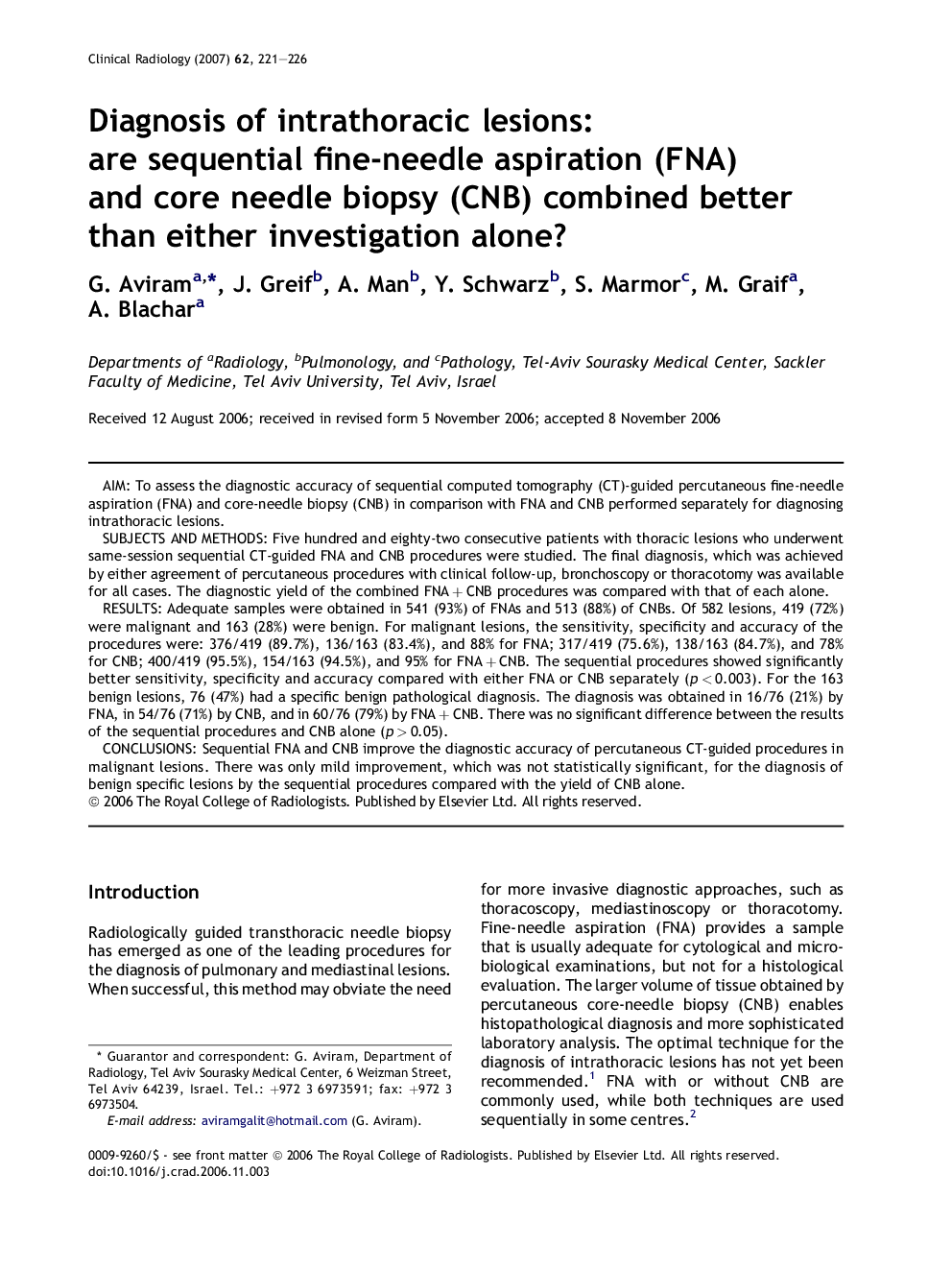| Article ID | Journal | Published Year | Pages | File Type |
|---|---|---|---|---|
| 3983526 | Clinical Radiology | 2007 | 6 Pages |
AimTo assess the diagnostic accuracy of sequential computed tomography (CT)-guided percutaneous fine-needle aspiration (FNA) and core-needle biopsy (CNB) in comparison with FNA and CNB performed separately for diagnosing intrathoracic lesions.Subjects and methodsFive hundred and eighty-two consecutive patients with thoracic lesions who underwent same-session sequential CT-guided FNA and CNB procedures were studied. The final diagnosis, which was achieved by either agreement of percutaneous procedures with clinical follow-up, bronchoscopy or thoracotomy was available for all cases. The diagnostic yield of the combined FNA + CNB procedures was compared with that of each alone.ResultsAdequate samples were obtained in 541 (93%) of FNAs and 513 (88%) of CNBs. Of 582 lesions, 419 (72%) were malignant and 163 (28%) were benign. For malignant lesions, the sensitivity, specificity and accuracy of the procedures were: 376/419 (89.7%), 136/163 (83.4%), and 88% for FNA; 317/419 (75.6%), 138/163 (84.7%), and 78% for CNB; 400/419 (95.5%), 154/163 (94.5%), and 95% for FNA + CNB. The sequential procedures showed significantly better sensitivity, specificity and accuracy compared with either FNA or CNB separately (p < 0.003). For the 163 benign lesions, 76 (47%) had a specific benign pathological diagnosis. The diagnosis was obtained in 16/76 (21%) by FNA, in 54/76 (71%) by CNB, and in 60/76 (79%) by FNA + CNB. There was no significant difference between the results of the sequential procedures and CNB alone (p > 0.05).ConclusionsSequential FNA and CNB improve the diagnostic accuracy of percutaneous CT-guided procedures in malignant lesions. There was only mild improvement, which was not statistically significant, for the diagnosis of benign specific lesions by the sequential procedures compared with the yield of CNB alone.
